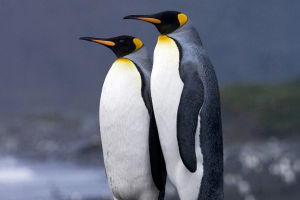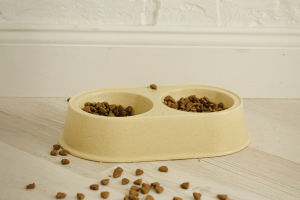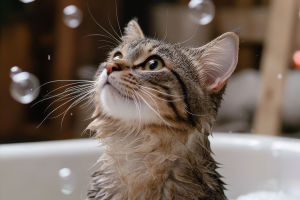In the animal world, we usually expect the female to carry and care for the developing young. But seahorses break that rule—it’s the male that gets pregnant!
This unusual trait sets seahorses apart and has made them one of the most fascinating marine creatures on Earth.
So how exactly does male pregnancy work in seahorses? And why did this role reversal evolve? Let’s explore the amazing biology behind it.
How Male Seahorses Get Pregnant
When a female seahorse is ready to mate, she deposits her eggs into a special pouch on the male's belly, called a brood pouch. This pouch is similar to a protective chamber. Once the eggs are safely inside, the male fertilizes them himself.
Over the next 2 to 4 weeks, the male provides oxygen, nutrients, and protection for the developing embryos. He controls the salt balance inside the pouch to match the ocean's environment—this helps the baby seahorses prepare for life outside.
When it's time, the male seahorse goes into labor and gives birth to dozens, sometimes hundreds, of tiny baby seahorses.
Why Does This Happen?
At first glance, it might seem strange for the male to do the "pregnancy" part. But in nature, every adaptation serves a purpose. In the case of seahorses, this reversal helps the species reproduce more efficiently.
Here's why:
• The female can produce another batch of eggs while the male is pregnant.
• This allows the pair to breed more often and raise more babies over time.
• The male's pouch provides a safe, controlled space for the embryos to grow.
So, by sharing the responsibility, both parents help boost survival chances for the next generation.
It's Not Just Seahorses
Seahorses aren't alone. Their close relatives—pipefish and sea dragons—also practice male pregnancy. They all belong to the same family: Syngnathidae.
Each of these animals has its own version of the brood pouch. Some pouches are fully enclosed, like the seahorse's, while others are more open. But in every case, it's the male who carries the developing young.
The Brood Pouch Is More Than a Bag
Inside the male seahorse's brood pouch, there's a complex network of blood vessels. These help deliver oxygen and nutrients to the embryos—just like a mammal's placenta.
This makes the seahorse's brood pouch a highly evolved reproductive structure, not just a simple container. It also allows the father to adjust temperature and water chemistry, offering the developing babies a perfect start to life.
A Unique Parenting Partnership
Even though the male carries the babies, both parents still play important roles. Female seahorses usually choose mates based on the male's pouch size and health. And once they bond, some species even form monogamous pairs for the season, returning to dance and reconnect every day during pregnancy.
This kind of cooperation isn't common in the fish world, which makes seahorses even more remarkable.
What We Can Learn from Seahorses
Nature has endless ways of organizing life. Seahorses remind us that there's no single way to raise a family or care for the next generation. What matters is survival, teamwork, and adapting to the environment.
In the ocean's delicate balance, seahorses show us that even the most unexpected strategies can work beautifully.
Let's Chat, Lykkers!
Had you ever heard about male seahorses being the ones to give birth? Isn't that wild? 🐴🌊
Tell us what surprised you the most—or drop your favorite ocean fact in the comments! Nature always has something new to teach us.
The next time you see a seahorse, give a little nod to the hardworking dads of the sea—tiny, graceful, and quietly incredible.


